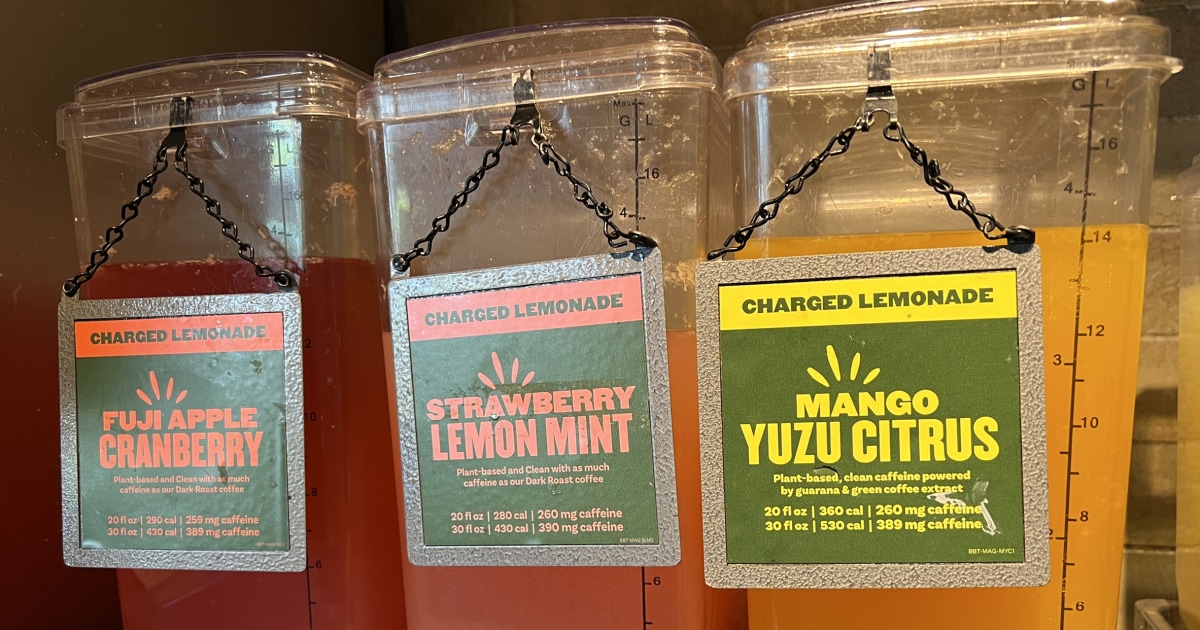Lawsuits have blamed the highly caffeinated drink for at least two deaths.
A Panera Bread spokesperson says the restaurant chain is phasing out its Charged Lemonade, a highly caffeinated beverage that has been blamed for at least two deaths in lawsuits.
The beverages prompted controversy in October following a lawsuit filed by the family of 21-year-old Sarah Katz, a University of Pennsylvania student with a heart condition who died after consuming Charged Lemonade. A second lawsuit was filed in December by the family of Dennis Brown, a Florida man with a chromosomal deficiency disorder and a developmental delay who also died after drinking a Charged Lemonade.
A third lawsuit was filed in January by Lauren Skerritt, a 28-year-old Rhode Island woman, which claimed the beverage left her with “permanent cardiac injuries.”
…
Panera previously advertised its Charged Lemonade as “Plant-based and Clean with as much caffeine as our Dark Roast coffee.” But the lawsuits said that at 390 milligrams, a large, 30-fluid-ounce Charged Lemonade has more caffeine in total than any size of Panera’s dark roast coffee, referring to the amount of caffeine that is in the drink with no ice. Panera has since updated its nutrition information to reflect how much caffeine is in the Charged Lemonade with ice, listing the large size of the blood orange Charged Lemonade, for example, as having 302 milligrams.
According to the Food and Drug Administration, healthy adults can generally safely consume 400 milligrams of caffeine a day.



I really hope you are joking.
Caffeine is nothing compared to nicotine.
Stimulant withdrawal in general is just shit (cocaine withdrawal is well-known to cause suicidal ideation), but yeah I would rank nicotine as the worst personally. Of all the times a patient just about straight up punched me in the face, nicotine withdrawl is about 50% of my top ten.
That said, there’s some key differences between caffeine and nicotine that probably contribute to this:
the obvious: caffeine is completely flameless. Even a vape has a heating element that I don’t want anywhere near cotton bedsheets with oxygen literally on tap from pipes that run through almost every interior wall in every patient care area. In theory they can have as many cups of coffee as they want and it’s super easy to taper with half-caff (or similar) if they are ready to quit. (Caffeine also doesn’t put anything into the air that could harm someone with a respiratory disorder or allergy).
More importantly: The caffeine withdrawal management options we have replicate the sensory experience of consuming the drug MUCH more closely than nicotine. The hand-to mouth behavioral pathway centers the experience on almost every place in your body with dense sensory nerve clusters. The only way they could make either nicotine or caffeine more addictive is by finding a way to also involve your genitals. The patch just does not cut it, but half-caff just might.
Now my work does also have nicotine lozenges, which help with oral fixation and better replicate the peaking and troughing blood levels of intermittent use, but that doesn’t help with the hand motion. A significant portion of smokers are self-medicating either ADHD or one of the similar disorders, and you’ll notice they LOVE to fidget with their hands (remember fidget spinners? They were supposed to be for kids with ADHD). I’ve been trying to talk my work into buying those quit-go inhalers (it’s a plastic tube with menthol flavor) but you know how admin weasels are with their yacht money.
I’m not sure I agree - I’ve quit smoking hundreds of times, I’ve never been able to quit caffeine.
You forgot this
.
.
.
/s
I didn’t forget. Deliberate choice.